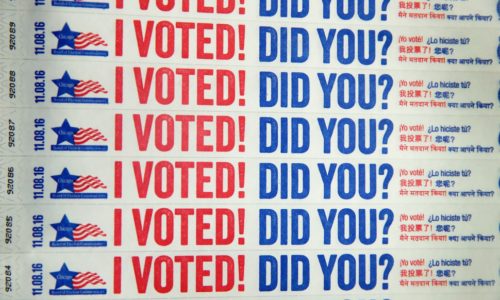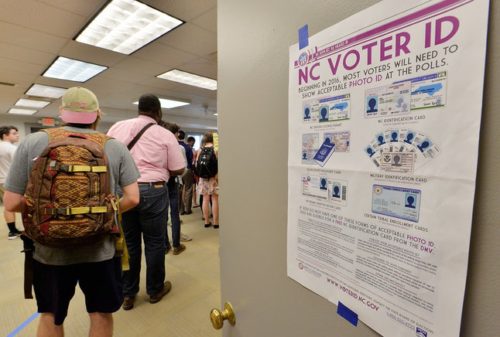Is There Voter Suppression In 2018? Here’s What It Could Look Like In The Midterms
Share
Explore Our Galleries
Breaking News!
Today's news and culture by Black and other reporters in the Black and mainstream media.
Ways to Support ABHM?
By Rowan Morrison, Bustle

Voter suppression is a serious issue that takes many forms — but it’s a lot more subtle than you might think. When it comes to voter suppression in the midterms, you might not even know it’s happening, but you can bet that a bunch of (strategically placed) red tape will end up blocking some people from voting this year.
Basically, any action taken with the goal of preventing or dissuading you from voting is voter suppression. You often hear about voter suppression in the context of policies that have made it harder for certain groups of people, or for people who live in certain areas, to cast their ballots. These barriers are bureaucratic for the most part. Voting rights advocates point to voter ID requirements, decreased early voting opportunities, polling station closures, voter roll purges, and gerrymandering as means of voter suppression.
Voting rights groups like the American Civil Liberties Union are challenging most of these obstacles in court, but there’s still the possibility you could run into difficulties at the polls. Don’t panic, though. There are a few simple steps you can take to make sure you (and the people you know) don’t encounter any barriers to voting this year. Let’s walk through some of the hurdles that could prevent you from voting, and then we’ll talk about what you can do about them.

Alright, what’s the first one?
Voter ID requirements are a relatively new innovation in the United States. No state required voters to present a photo ID in order to cast their ballot prior to 2006. But today, 34 states require voters to present some form of ID, according to Ballotpedia. Voters in 17 of those states must present a photo ID…
Read the full article here
Read about voter suppression in Wisconsin here.
and here Read more Breaking News here
View more galleries from the ABHM here









Comments Are Welcome
Note: We moderate submissions in order to create a space for meaningful dialogue, a space where museum visitors – adults and youth –– can exchange informed, thoughtful, and relevant comments that add value to our exhibits.
Racial slurs, personal attacks, obscenity, profanity, and SHOUTING do not meet the above standard. Such comments are posted in the exhibit Hateful Speech. Commercial promotions, impersonations, and incoherent comments likewise fail to meet our goals, so will not be posted. Submissions longer than 120 words will be shortened.
See our full Comments Policy here.